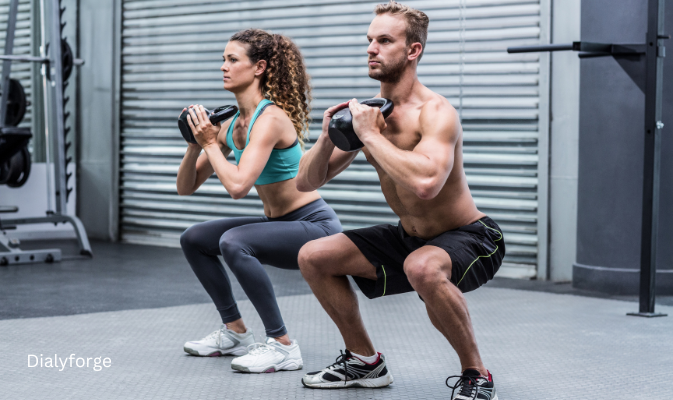Stress and anxiety can take a toll on your mental and physical health, but exercise is a powerful tool to combat both. Physical activity releases endorphins, reduces stress hormones, and provides a natural way to improve mood and mental clarity. Whether you’re dealing with daily stressors or chronic anxiety, incorporating regular exercise into your routine can make a significant difference. This guide explores how exercise can help reduce stress and anxiety, along with tips for finding the best workouts for your mental well-being.
1. How Exercise Reduces Stress and Anxiety
Exercise positively impacts your mental health in several ways:
- Releases Endorphins: Physical activity triggers the release of “feel-good” hormones, improving mood.
- Reduces Cortisol Levels: Exercise helps lower cortisol, the body’s primary stress hormone.
- Enhances Relaxation: Regular exercise improves sleep quality and reduces restlessness.
- Provides a Mental Break: Physical activity shifts your focus, giving you a break from stressors.
- Boosts Confidence: Achieving fitness milestones can enhance self-esteem and resilience.
2. Best Types of Exercise for Stress and Anxiety
Different forms of exercise offer unique mental health benefits. Here are the most effective options:
1. Aerobic Exercise
- Activities like running, cycling, or brisk walking elevate your heart rate and release endorphins.
- Aim for 30 minutes of moderate aerobic activity most days of the week.
2. Yoga
- Combines physical postures, deep breathing, and meditation to promote relaxation.
- Styles like Hatha or Yin Yoga are especially effective for reducing anxiety.
3. Strength Training
- Lifting weights or doing bodyweight exercises helps release tension and improve focus.
- Perform strength training 2–3 times a week to enhance both physical and mental resilience.
4. Mindfulness-Based Activities
- Pilates and tai chi integrate mindfulness with movement, reducing stress and improving body awareness.
5. High-Intensity Interval Training (HIIT)
- Short bursts of intense activity followed by rest can improve mood and provide a mental boost.
3. How to Start an Exercise Routine for Stress Relief
If you’re new to exercise or looking to focus on mental health benefits, follow these steps:
- Set Realistic Goals
- Start with small, manageable steps, such as a 15-minute walk each day.
- Choose Activities You Enjoy
- Engage in exercises that you find fun and motivating, whether it’s dancing, swimming, or hiking.
- Create a Schedule
- Consistency is key. Aim for 3–5 sessions per week, even if they’re short.
- Find a Partner or Group
- Working out with friends or joining a class can provide social support and accountability.
4. Incorporate Mindful Movement
Mindfulness enhances the stress-relieving effects of exercise by keeping you present in the moment.
- Focus on Breathing: Pay attention to your inhales and exhales during exercise.
- Tune In to Your Body: Notice how your muscles feel and how your body moves.
- Avoid Multitasking: Skip distractions like checking your phone during workouts.
5. Use Nature to Your Advantage
Exercising outdoors amplifies the stress-reducing benefits of physical activity:
- Green Spaces: Running or walking in parks can lower stress hormones and improve mood.
- Sunlight Exposure: Boosts serotonin levels, which can alleviate anxiety and depression.
- Beach or Forest Walks: The calming sounds of waves or rustling leaves enhance relaxation.
6. Make Exercise Part of Your Self-Care Routine
Regular exercise should complement other self-care practices for a holistic approach to stress relief:
- Pair with Relaxation Techniques: Combine workouts with meditation, deep breathing, or journaling.
- Fuel Your Body: Maintain a balanced diet to support energy levels and mental clarity.
- Prioritize Sleep: Regular exercise improves sleep, which is crucial for managing stress and anxiety.
7. Track Your Progress
Seeing how far you’ve come can motivate you to stay consistent:
- Use Fitness Apps: Log your workouts and monitor improvements in mood or stress levels.
- Reflect on Benefits: Note changes in how you feel before and after exercise.
- Celebrate Small Wins: Acknowledge achievements, like completing a workout or trying a new activity.
8. Overcoming Barriers to Exercise
Stress and anxiety can sometimes make it hard to get started. Here’s how to overcome common obstacles:
- Lack of Time: Break your exercise into smaller sessions, like three 10-minute walks.
- Low Energy: Start with gentle activities like stretching or yoga to build momentum.
- Overwhelm: Choose simple, low-pressure activities like a leisurely walk or bike ride.
9. When to Seek Professional Guidance
Exercise can significantly reduce stress and anxiety, but it’s not a substitute for professional help:
- Chronic Anxiety or Depression: If symptoms persist, consult a mental health professional.
- Exercise Guidance: Work with a trainer or join a class if you’re unsure how to start.
Conclusion
Exercise is a powerful and natural way to reduce stress and anxiety while improving overall well-being. By finding activities you enjoy, incorporating mindfulness, and staying consistent, you can create a routine that supports both your physical and mental health. Remember, every step counts—whether it’s a short walk or a yoga session, each workout brings you closer to a calmer, healthier mind.

